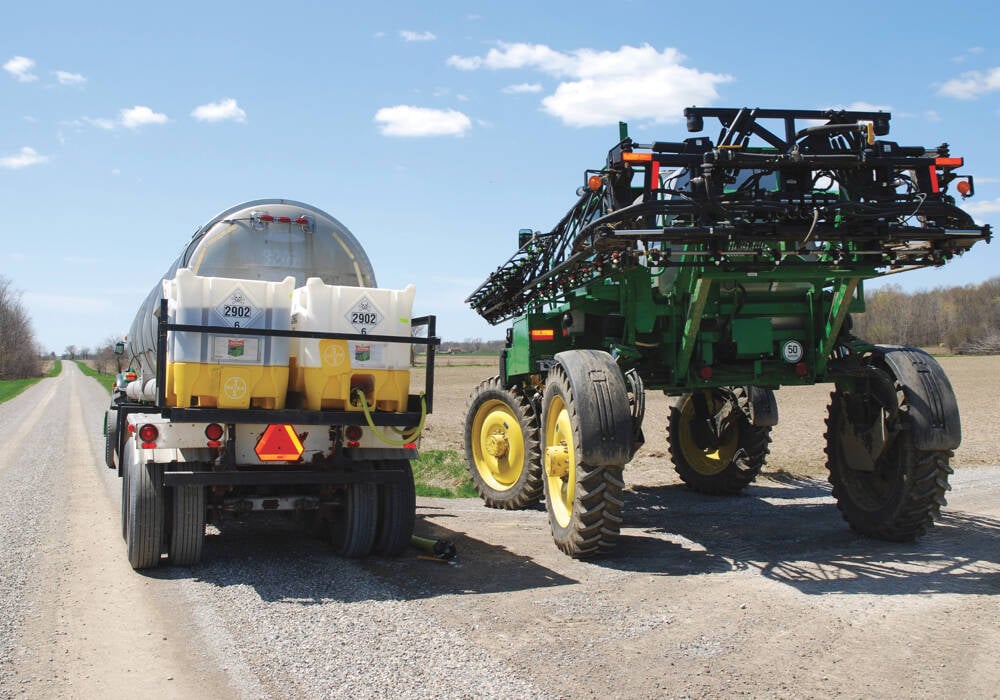The pulse crop has significant potential, but researchers are still attempting to solve significant agronomic challenges
Lupin is a promising crop that will likely get a foothold on the Canadian Prairies, but more research is needed into the pulse before this can happen.
“I just want to caution the industry right now to not move too quickly. There’s so much demand and so many questions about lupin seed, and I just want everybody to hold their horses if they wouldn’t mind while we figure out some of these questions,” said Robyne Bowness Davidson, a pulse specialist at Lakeland College.
Bowness Davidson, who has been working with lupin since 2004, said the crop can have protein levels of up to 40 percent, which is much higher than any other pulse crop grown on the Prairies.
Read Also

Warding off dicamba spray drift
When it comes to farm weed control, some spraying experts say dicamba’s drift risk isn’t worth it, others say it’s a matter of proper management, smart farmer decisions and chemical product choice.
She said research interest into lupin waned for a time because it was difficult to develop a reliable market for the crop.
Then in 2016 and 2017 new varieties of blue lupins became available so crop researchers started to test whether they could be adapted to fit Alberta’s growing conditions.
Now, with massive demand for pulse proteins, there is increasing pressure to start feeding lupins to these growing markets.
“An increased interest in these plant-based proteins has really changed the way we’re looking at these proteins and where they’re coming from,” Bowness Davidson said.
“There’s huge industry dollars behind it that there didn’t use to be. Now not only are we looking at this as a potential crop, we actually have some markets developing at the same time, which is huge.”
However, there are significant agronomic challenges that need to be addressed before the crop is ready for large-scale adoption by prairie farmers.
She said her team is conducting the typical research that any new crop requires, including seeding rates and disease susceptibility.
There is evidence that some lupins varieties are aphanomyces-resistant.
“The big ones are the adaptability in the variety testing. We’re pulling varieties out of Europe and testing them here because if they’re not adapted and they’re not doing well and performing well, there’s no point bringing them in.”
Lupins with both blue and white seeds are being examined.
The food industry prefers lupins with white seed because they are used to working with them, the white seed creates white flour making it easier to bring into food products, and they seem to be lower in alkaloids.
However, growing lupins with white seed has challenges.
In the trials Bowness Davidson conducted, some of the blue lupin varieties yielded up to 47 bushels per acre, while the white lupins yielded up to 28 bushels per acre.
“But it’s the maturity of these whites that are causing the concern,” Bowness Davidson said.
“The yields are lower because they’re such a long maturing crop. They take a lot longer than the blues do and will be equivalent or even longer than fava beans.”
She said lupins have lower yields compared to crops such as peas, but they have a higher protein level.
So, a question remains whether the industry will pay more for the extra protein to make up for the lower yields.
Desiccation products and timing are also important to understand because lupins are different compared to other pulse crops when it comes to maturation.
When it comes to broadleaf herbicides, the only option so far is Squadron at a half rate.
“That’s about all we’ve got,” Bowness Davidson said.
“But we need more than just one product. So, we’re going to test a lot of these products and just see how we can push this crop to see if we can get some better weed control.”
Farm-scale testing was conducted last summer, but the dry conditions made it a challenge because lupin likes cooler and wetter conditions.
“A pH of about 7.2 was a surprise to us. All the sudden we had a lot of toxicity issues that we didn’t know why. We’re going to have to address that in certain areas of the province,” Bowness Davidson said.
“We had poor nodulation due to lack of moisture and some of the products we were using and how they were being used. And we had some herbicide injury with producers trying some of the pulse herbicides on lupins that they would use on other pulses, and it didn’t work so well.”
Green tissue in the stem also made the crop difficult to cut, which may have been a result of the late moisture that came at the end of August.
“There was a lot of shattering as soon as that combine header hit that plant, and there were low yields as a result of all of that,” Bowness Davidson said.
“I’m not trying to be a downer and say how terrible lupins are. I just want to point out that we had a lot of challenges that we need to address. We’re just not there yet with lupins.”
She said early distribution of seed would kill the industry, so it’s imperative that the release of seed is controlled until many of the research questions are answered and buyers are in place to take the product.
















